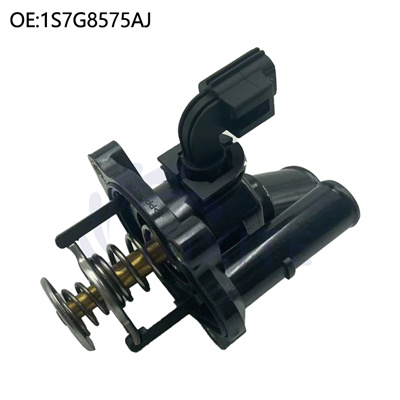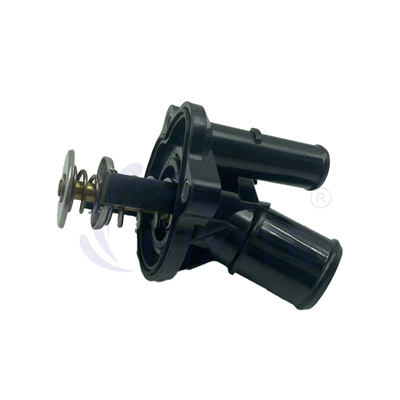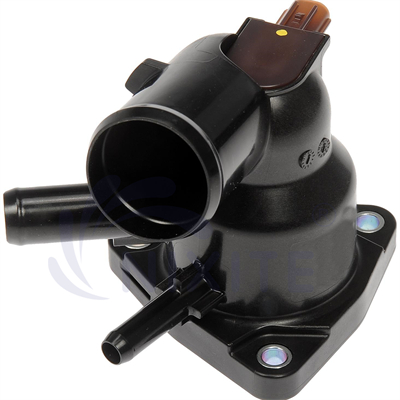The thermostat is one of the indispensable parts of the car cooling system. Although the engine can work without a thermostat, the engine water temperature will be low. Low water temperature will have a great impact on the engine. Excessive heat loss will lead to engine performance. Increased consumption, low water temperature will also lead to increased friction coefficient, increased friction will lead to increased wear of parts.
Low temperature will also have a great impact on emissions. Exhaust emissions are not up to standard. Low temperature will also cause the warm air in the car to not be hot, which will affect comfort. The thermostat is between the water pipe of the engine and the radiator (water tank). When temperatures are low, the thermostat shuts off the coolant, circulating only a small amount through the engine.
The purpose is to let the engine heat up quickly and enter the normal working state. When the coolant temperature rises, in order to prevent the temperature from being too high, the thermostat starts a large cycle. At this time, the coolant enters the water tank to dissipate heat, and the cooled coolant enters the engine to cool the engine. And it circulates continuously under the drive of the water pump.

If you know the function of the thermostat, if you are smart, you should guess the consequences of not installing it. Next, let’s talk about the disadvantages of not installing the thermostat. The engine needs to work within a certain temperature range. If the temperature is too high, it will cause frequent knocking. Reduce engine power.
If it is heavy, the lubricating oil cannot form a lubricating oil film, which will lead to increased engine wear and tear, and even parts will be deformed due to high temperature expansion, so the engine has a heat dissipation system, and the high temperature coolant is transported to the radiator of the front of the car through pipelines to cool down, so as to ensure that the engine will not overheat. .
However, the heat dissipation power of the radiator is very large. If the coolant has been circulating in the radiator, the engine temperature will soon be too low. At this time, a large amount of heat that could be used for work is absorbed by the engine and transported to Radiator, dissipated, resulting in increased fuel consumption.
Moreover, gasoline atomization is not good at low temperature, and the engine is more likely to deposit carbon. When the engine temperature rises to 80°C to 90°C, after a period of time, you will know whether there is water vapor coming out, or the depth of water becomes shallow or becomes shallower, but cannot be completely drained in this way.

The reason is that the sealing ring (water blocking ring) of the steel cylinder is damaged or shrunk due to high water temperature. If the water blocking ring is broken, the coolant will run into the engine oil, and our engine oil will increase. We can pull out the oil dipstick , to see if there is an increase, or open the oil cap to see if there are water droplets or steam in the cap.
Another method is to check the exhaust pipe under the engine (the place where the exhaust gas is discharged) after we start the vehicle for a few minutes. If there are drops of water dripping down, it means that the engine coolant has entered the engine oil. At this time, the only way is to Overhaul and disassemble the engine.
If the thermostat is removed and the thermostat is not used, the engine coolant is always in a state of large circulation, the water temperature will rise slowly, and the engine water temperature will not reach the optimum working temperature. If the coolant temperature is relatively low, the fuel injection volume will also be relatively large Larger, the fuel consumption will be relatively higher, and then the water temperature will gradually rise, even if you want to blow warm air in winter, it will not be too warm.
The disadvantage of not installing a thermostat on the engine is that the heat dissipation cycle of the engine has been in the large cycle heat dissipation mode, the engine temperature rises very slowly, the engine is in a warm-up state for a long time, the engine is not at the optimum working temperature, the fuel consumption of the engine will increase, and the engine will continue for a long time. Working at low temperatures, the injected fuel mixture burns insufficiently.
It will lead to blockage of the three-way catalytic converter, long-term insufficient combustion of the mixed gas will lead to increased carbon deposits in the cylinder, and the engine heat dissipation cycle is always in a large cycle. Warm air, the wind blowing out is cool, seriously affecting driving comfort.

Regardless of whether the engine temperature is too high or too low, it will cause great damage to the engine. When the engine water temperature is too high, you should carefully check the cooling system for poor heat dissipation, damaged thermostat, and excessive water tank scale. The generated water temperature is too high, do not easily disassemble or adjust the coolant temperature adjustment device, and maintain the normal operating temperature of the engine, which can make the engine have good power and economy.
